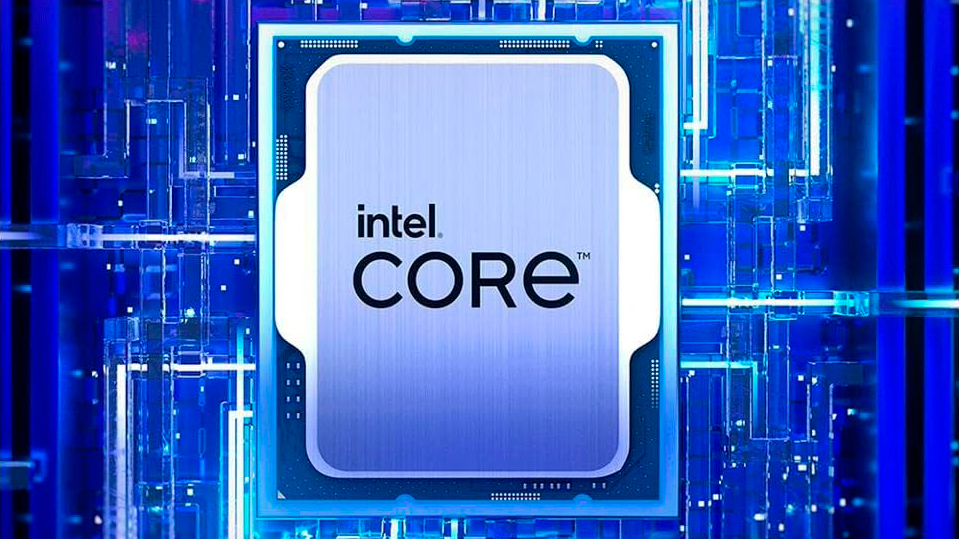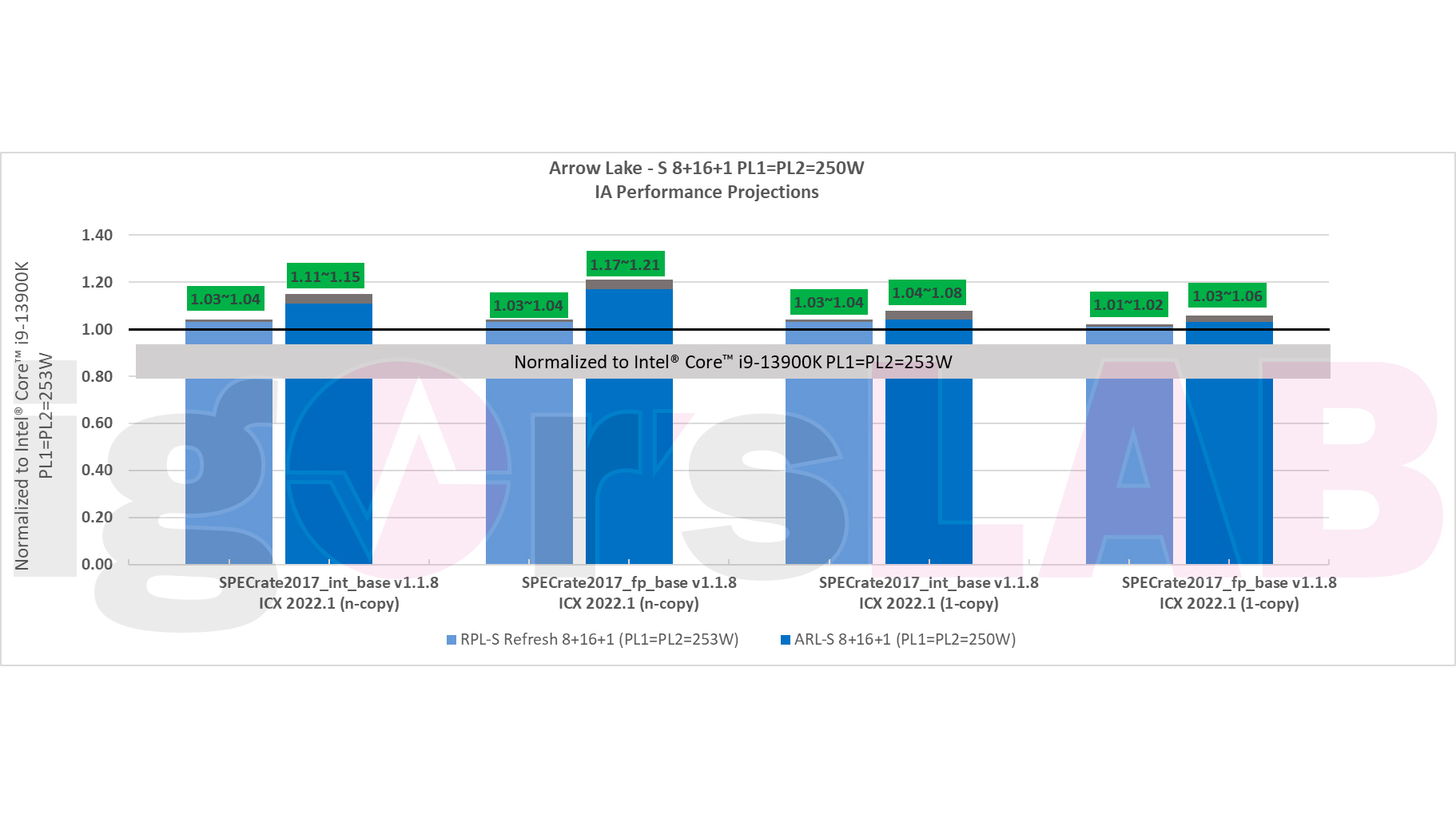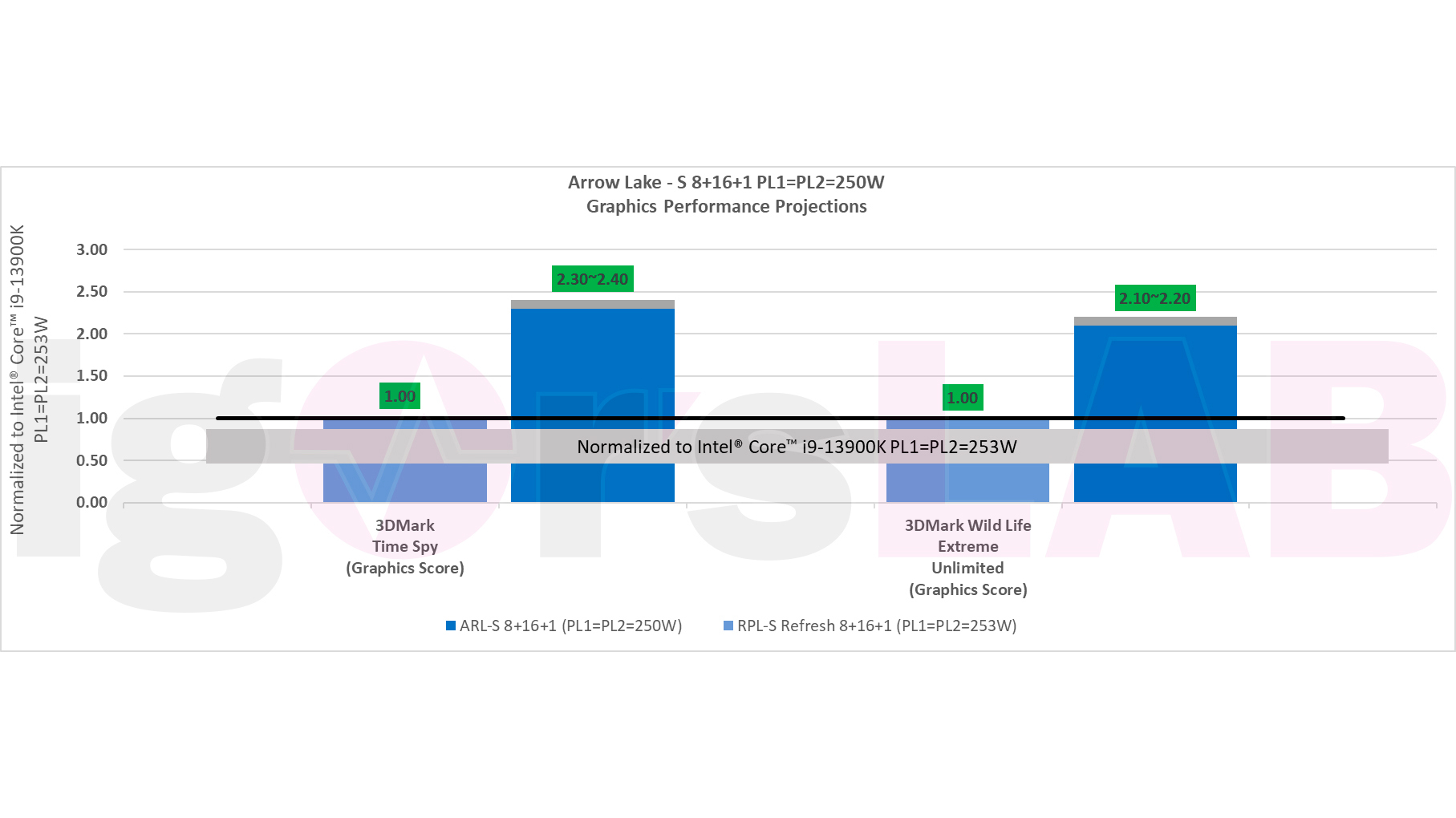Intel Raptor Lake Refresh, Arrow Lake CPU Performance Projections Leaked

There will be two upcoming contenders from Intel's camp to compete with the best CPUs on the market. Raptor Lake Refresh processors are rumored for an October launch; meanwhile, Arrow Lake processors will arrive in 2024. German publication Igor's Lab has reportedly obtained Intel's internal performance projections for both forthcoming processor lineups.
One thing to remember is that the performance projections are rough estimates of the level of uplift that we could see from Raptor Lake Refresh and Arrow Lake. It does not indicate the final product performance, so take the numbers with a pinch of salt.
Intel used the Core i9-13900K as the basis of its performance projections. The chipmaker reportedly limited the Raptor Lake and Raptor Lake Refresh processors' PL1 and PL2 to 253W and the Arrow Lake part to 250W. The trio of processors appear to share the same core configuration: 8+16+1. But what's interesting is the power consumption. According to this preliminary data, Arrow Lake may be as power-hungry as Raptor Lake. Intel supposedly normalized the results based on the Core i9-13900K and 100% mark.
According to the charts, the Raptor Lake Refresh processors bring performance improvements between 1% to 3% over current Raptor Lake chips. The results look accurate since it is a refresh, after all. Like past refreshes, the new processors will arrive with better clock speeds. It remains to be seen just how much optimization is left in the Intel 7 node. Keeping our expectations in check, Raptor Lake Refresh likely won't break the 6 GHz barrier. At the moment, it's uncertain if Intel plans to bring another KS model to the market. Igor's Lab believes such a chip may have a 6.2 GHz boost clock.
The estimations show that we shouldn't expect any iGPU performance upgrade on Raptor Lake Refresh. The integrated graphics is reportedly the same Intel UHD Graphics 700-series units with a maximum execution unit (EU) count of 32 with a 1.65 GHz peak clock speed that's unlikely to change.



It would seem that Intel is allegedly more optimistic about Arrow Lake. The leaked charts reveal that Arrow Lake could be up 3% to 21% faster than Raptor Lake, with significant performance increases in multi-core operations. Arrow Lake seemingly excels in floating-point performance. Intel recently released a document confirming that Arrow Lake and Arrow Lake support AVX-VNNI-INT16, SHA512, SM3, and SM4 instructions that focus heavily on AI and hashing functions. The AVX-VNNI instruction is vital since it helps improve performance associated with inference tasks in neural networks. Therefore, workloads related to AI, machine learning, and deep learning reap the benefits of Arrow Lake and Lunar Lake.
Arrow Lake's biggest eye-opener is the integrated graphics. Intel purportedly forecasts between 220% to 240% iGPU performance improvements over Raptor Lake in synthetic benchmarks, such as 3DMark Time Spy and 3DMark Wild Life Extreme. Like Meteor Lake, Arrow Lake will feature Intel's 3D Foveros packaging technology that stacks chipsets vertically. The Xe-LPG iGPU, based on Alchemist, will have its own tile, but the number of EUs and the clock speeds remain a secret.
Get Tom's Hardware's best news and in-depth reviews, straight to your inbox.
Like its kin, Raptor Lake Refresh will continue to use the LGA1700 socket, meaning you can recycle your Intel 700-series motherboards. Vendors started deploying new firmware to support Raptor Lake Refresh a month ago. Nonetheless, some manufacturers will take the opportunity to release new motherboards based on the same chipsets for Raptor Lake Refresh.
Arrow Lake, on the other hand, will require a new socket. The current rumor is that chips will reside on the LGA1851 socket, which has 9% more pins than the existing LGA1700 socket. That means we'll likely see the introduction of the new Intel 800-series chipsets to accompany the LGA1851 socket.
Igor's Lab allegedly has more privileged information on Arrow Lake, such as the specifications for the LGA1851 and among other things. It shouldn't be long before we get to know Arrow Lake better, which is the real successor to Raptor Lake.

Zhiye Liu is a news editor, memory reviewer, and SSD tester at Tom’s Hardware. Although he loves everything that’s hardware, he has a soft spot for CPUs, GPUs, and RAM.
-
bit_user ReplyThe trio of processors appear to share the same core configuration: 8+16+1
What's the last "+1"? Since it's in the leaked slides, it doesn't seem to be a typo.
The leaked charts reveal that Arrow Lake could be up 3% to 21% faster than Raptor Lake, with significant performance increases in multi-core operations.
Yes, it's worth noting exactly where those lower-bounded results come from:
SPEC2017 int @ 1 thread: 4% to 8%
SPEC2017 fp @ 1 thread: 3% to 6%
So, that tells us the IPC gains should probably be less than that, because it'll presumably clock higher. Or, maybe it clocks lower, but with a bit more IPC than that. Either way, it's looking like IPC gains of Lion Cove (Arrow Lake's P-core) should be fairly modest.
I think the interconnect and cache architecture were really holding back the E-cores, on Raptor Lake. So, presumably improvements there are behind some of the multithreaded gains. Another contributing factor could be the Skymont E-cores delivering a bigger generational improvement over Gracemont, than Lion Cove did over Raptor Cove. That wouldn't show up in the single-threaded results above, since those tests should be running a P-core.
...and if we turn our attention to those same SPEC2017 results on Raptor Refresh, it's telling that they scale almost identically between the single-threaded and multi-threaded cases. That suggests Raptor Refresh is almost purely a frequency-scaling exercise. -
TerryLaze Replybit_user said:What's the last "+1"? Since it's in the leaked slides, it doesn't seem to be a typo.
It's idiotic to count it with the normal cores though...DrMaxP said:I came here to ask the same question. what's the +1 on the 8+16+1?
https://www.networkworld.com/article/3085389/is-the-secret-chip-in-intel-cpus-really-that-dangerous.htmlThe impending doom comes from the Intel Management Engine (ME), a subsystem that uses a 32-bit Argonaut RISC Core (ARC) microprocessor that's physically located inside the x86 chipset.
-
Replybit_user said:What's the last "+1"? Since it's in the leaked slides, it doesn't seem to be a typo.
It refers to the "Graphics Tile" which contains the first iteration XE 1 Alchemist graphics, iGPU, which is embedded within the graphics tile/GT. So they are referring it as GT1. Where 1 denotes the Xe1 Alchemist GPU.
Xe1 - Alchemist GPU
Xe2 - Battlemage GPU
Xe3 - Celetistal GPUThey shouldn't have mentioned it with the core count config though. This is just a temporary way to represent it in this preliminary slide from Intel. -
cyrusfox Intel desktop has such a long tail compared to mobile for updates once again, we were on Skylake to Comet lake forever, got a sidegrade in Rocketlake, and we are on 2-3 generations of stagnation from Alder to Raptorlake. Gluing their chips together:D should fix that so hopefully we see a better cadence of actual Desktop CPU updates. I guess it is unrealistic to expect the past to repeat but Intel use to be on track with tick tock designs(Conreo/core all the way to skylake, pumping out innovation and improvements in an 18 month or so cadence), now the release cadence is very muddy. 5 nodes in 4 years, sure... But what does that actually translate to the consumer market.Reply
Mobile has been a tad bit better although the chips themselves are underwhelming, Ice Lake, Tiger Lake... We'll see about Meteor Lake? Rumors suggest it will follow the prior 2 as mobile only release, Maybe we see a few embedded desktop designs. -
atomicWAR Pretty Meh IMHO. But that's to be expected beating a 'dead horse' like alder/raptor lake as its clear Intel needs to move on to a new architecture at this point. Though to be fair it was impressive at launch. Just not so much now for a 'new' chip.Reply -
InvalidError 1851 pins on the next socket up. At this rate, we're one more socket generation away from mainstream platforms out-pinning quad-channel HEDT platforms from a decade ago, without the extra PCIe and DRAM channels.Reply -
Eximo That would seem to be the next step, but I doubt it can be justified as long as mobile and desktop parts share an architecture.Reply
AMD could easily do it, but it would get confusing as I think any single CCD chip would be limited to dual channel. And then you would either raise the minimum motherboard price or have to limit quad channel to X boards or something. -
NeoMorpheus Given that intel lies on products launches, imagine how much more they would on rumors.Reply
Anyways, im done with them and glad that AMD is trashing them left and right.